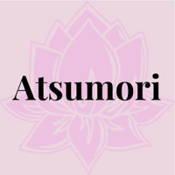
Explore this Show
Overview
Synopsis
One of the most famous stories in Noh drama, Atsumori recounts the story of a young warrior and flute player killed in a battle between the Heike and Genji in the late 12th century. The priest Rensho, formerly the warrior Kamagae, wanders the countryside, seeking forgiveness and peace. He killed Atsumori, at the time believing it was merciful as approaching soldiers would have tortured the young soldier. But now, he is returning to the site of the battle so that he can finally pray for Atsumori’s soul and they may both have peace. At the village, Rensho meets grasscutters, and is emotionally and spiritually moved by their flute music. He is finally able to confront the ghost of Atsumori. Guided by the chorus’ music, the ghost relives his final battle and death, and finds peace and Enlightenment with Rensho, where they will be reborn on the same lotus petal.
Like many noh plays, Atsumori privileges mood over plot. Zeami creates yugen (mysterious beauty) through the poetic songs in order to reveal the truths of balance, Buddhism, and Enlightenment. The play’s staging is traditional, using slow and choreographed movements to the music of the orchestra, the same as it has been for centuries. In traditional noh dramas, the chorus is present onstage for the whole play, and featured characters might step forward from the chorus before sitting down again. There are three character types in noh plays: the shite is the central figure, much like the protagonist in western theatre; the waki is a supporting character, a foil to the shite who helps him pursue Enlightenment; and the kyogen, a “clown” who helps provide important exposition and leads the interlude between the two acts.
Show Information
Context
Plot
Characters
| Name | Part Size | Gender | Vocal Part |
|---|---|---|---|
|
Lead |
Male |
Non-singer |
|
|
Lead |
Male |
Non-singer |
|
|
Supporting |
Male |
Non-singer |
|
|
Supporting |
Male |
Non-singer |
|
|
Featured |
Male |
Non-singer |
Songs
A song with an asterisk (*) before the title indicates a dance number; a character listed in a song with an asterisk (*) by the character's name indicates that the character exclusively serves as a dancer in this song, which is sung by other characters.
Monologues
Scenes
Key Terms
Sorry! We do not currently have terms for this guide.
Videos
Quizzes
Themes, Symbols & Motifs
Sorry! We do not currently have learning modules for this guide.
Quote Analysis
Sorry! We do not currently have learning modules for this guide.
